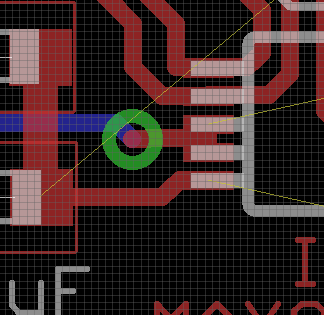I am designing a two layer board, the problem is I do not know how to select via diameter and drill size, as well as outer and inner diameters.
In my circuit I use 056, 012 and 006 mil traces:
I have asked the manufacturer, they said they can make vias as small as 1 mil.
So my question is what should I choose for Outer, Inner diameter and drill size? For example, is it OK to use 10 mil drill for 6 mill trace? and what should it be for 56 and 12 mil tracks?
Also what is the green cylinder is going to look like when I get the board manufactured?
I am really short on money I can not afford to make mistakes.




